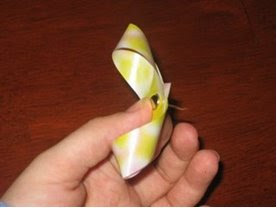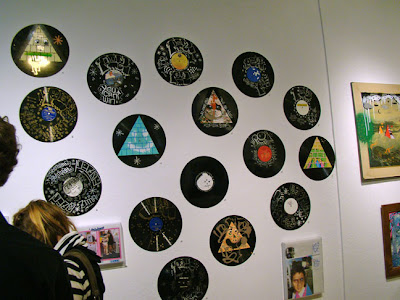Recycling Code & SymboL
Plastic
is recyclable and often viewed as the more environmentally acceptable material
whether it really is or not. Most plastic products come with a code on the
bottom, this code determines if and how this product can be recycled. Before
being recycled the plastic is sorted by a Plastic Identification Code and
number; there are 7 classifications for plastic. These classifications are used
world wide along with the arrowed triangle.
1.
When you see a number 1 inside the recycling symbol, you are holding
Polyethylene Terephthalate also known as polyester, likely a soft drink or water bottle or some sort of
salad dressing or peanut butter container. Suspected cancer causing properties. Acetaldehyde was found to migrate into water. Does not clean well, do not reuse bottles. #1 is recyclable.
2.
Number 2 is High Density Polyethylene, your milk jugs, juice bottles, and
shampoo bottles, for example. Little research about these. No ebidence to toxicity, endocrine disruption or estrogen mimics. Migration occurs with high temps and especially with fats or oils. HDPE generally exhibits the least migration. There is evidence of migration into food products, even dry foods. #2 is recyclable.
3.
Number 3 is Vinyl or PVC. This is in window cleaners, detergent containers, and
clear food packaging. Some but not all phthalates found in PVC may be considered harmful to fetuses and young infants in any concentration PVC's are suitable, if at all, only for older children. May have BPA. #3 is rarely recycled.
4.
Number 4 is Low Density Polythylene, found in squeezable bottles, bread and
frozen food packaging, carpet, and dry-cleaning bags. Few scholarly studies. No evidence of leaching. #4 is sometimes recycled.
5.
Number 5 is Polypropylene. Items include
yogurt and syrup containers, straws and medicine containers. Stabilizers used in polypropylene are biologically active (potentially affecting nerve transmission ) and tend to leach from the plastic. #5 is sometimes recycled.
6.
Number 6 is Polystyrene. This would be your disposable plates, cups, egg
cartons, and cd cases. Is a mutagen, (carcinogenic or cancer causing effects) neurotoxic, cytogenetic (chromosomal and lymphatic abnormalities) #6 is recycled.
7.
Number 7 is Miscellaneous. Included in this category are large, 3-5 gallon
bottles used for water or gas, ipod and computer cases, DVD’s and sunglasses. Polycarbonate (Lexan) is used extensively in food-contact utensils, including baby bottles, sports water bottles, food containers and tableware. Its basic monomer is Bisphenol A (BPA), originally synthesized in the 1930's as an estrogen for pharmacological use. Some like PLA have no BPA and are considered safe. #7 is not usually recycled.
Subscribe to:
Comments (Atom)






















































